*Please prepare a license ID and password for the license administrator.
*It is different from the service for JMAG WEB MEMBER (free membership). Please be careful.
Overview
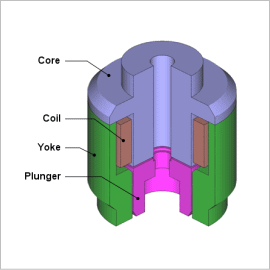
A solenoid type injector used in engines opens a valve and injects fuel by moving a plunger with magnetic force created by an electromagnet. Injectors in engines need to respond quickly for applied voltage to improve fuel consumption by maintaining the amount of fuel flow.
In solenoid injectors, one of the reasons that the response is delayed is eddy currents, which are produced when the magnetic flux generated by current flow undergoes time variations. The eddy currents are generated in a direction that inhibits changes in the magnetic flux, causing a delay in the initial rise of the attraction force when the current begins to flow. This reduces the injector’s responsiveness. JMAG makes it possible to account for the effects from eddy currents and obtain an injector’s responsiveness by running a transient response analysis. Identifying the places where eddy currents are generated enables a designer to study whether or not responsiveness can be improved.
This Application Note explains how to apply direct current voltage to a solenoid injector and obtain its response characteristics by accounting for effects from eddy currents.
In solenoid injectors, one of the reasons that the response is delayed is eddy currents, which are produced when the magnetic flux generated by current flow undergoes time variations. The eddy currents are generated in a direction that inhibits changes in the magnetic flux, causing a delay in the initial rise of the attraction force when the current begins to flow. This reduces the injector’s responsiveness. JMAG makes it possible to account for the effects from eddy currents and obtain an injector’s responsiveness by running a transient response analysis. Identifying the places where eddy currents are generated enables a designer to study whether or not responsiveness can be improved.
This Application Note explains how to apply direct current voltage to a solenoid injector and obtain its response characteristics by accounting for effects from eddy currents.
Response Characteristics
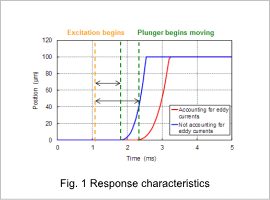
Fig. 1 shows the response characteristics of the plunger versus time. The plunger’s displacement assumes the opening direction to be positive, and the valve is fully open when the displacement is 0.1 mm.
Fig. 1 demonstrates the difference in responsiveness of the plunger depending if eddy current is accounted for or not. Responsiveness is lower when eddy current is accounted for.
Fig. 1 demonstrates the difference in responsiveness of the plunger depending if eddy current is accounted for or not. Responsiveness is lower when eddy current is accounted for.
Attraction force characteristics
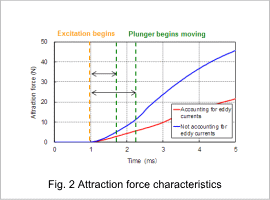
Fig. 2 shows the attraction force characteristics.
Fig. 2 shows attraction force is lower when eddy current is accounted for compared to when it isn’t accounted for. Responsiveness decreases when eddy current is raised due to a decrease in attraction force.
Fig. 2 shows attraction force is lower when eddy current is accounted for compared to when it isn’t accounted for. Responsiveness decreases when eddy current is raised due to a decrease in attraction force.
Current characteristics
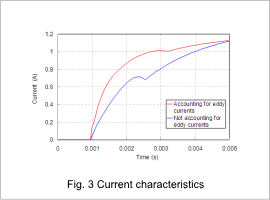
Fig. 3 shows response characteristics for current versus time.
Fig. 3 demonstrates the valve is open at 0.003(s) when eddy current is accounted for. However, when eddy current isn’t accounted for, the valve is open at 0.0025(s). A slower responsiveness can be verified from the current flowing in the coil when eddy current is accounted for.
Furthermore, when eddy current is accounted for, there is a lot of current flowing through the coil even though attractive force is lowered, compared to when it isn’t accounted for.
Fig. 3 demonstrates the valve is open at 0.003(s) when eddy current is accounted for. However, when eddy current isn’t accounted for, the valve is open at 0.0025(s). A slower responsiveness can be verified from the current flowing in the coil when eddy current is accounted for.
Furthermore, when eddy current is accounted for, there is a lot of current flowing through the coil even though attractive force is lowered, compared to when it isn’t accounted for.
Current Density Distribution
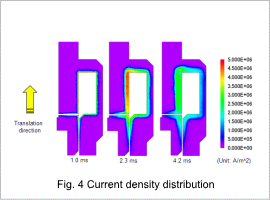
Fig. 4 shows the current density distribution when the current starts flowing 1 ms, when the plunger starts moving 2.3 ms and when the plunger moves one stroke 4.2 ms. The plunger moves in the direction that the valve opens in. When current flows in the coil, eddy currents are produced in the core, yoke and plunger. Magnetic flux flows rapidly when the current starts running, which causes eddy currents to concentrate in the surface of each part. However, eddy currents begin flowing in the interior of each part as time passes because the power supply is a direct current. These eddy currents lower the injector’s responsiveness.


